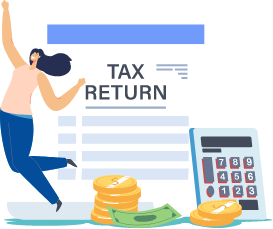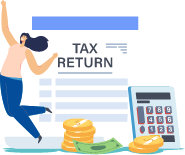How negative gearings calculations can help you make smarter investment decisions?
In the world of investments, there are many strategies and terms that can seem daunting at first. One such term that often comes up is 'negative gearing.' But what does it really mean?
Simply put, negative gearing occurs when the expenses of an investment surpass the income it produces. While this might sound like you're losing money, there's more to the story. This strategy can lead to significant tax advantages, making it a favorite among many seasoned investors.
In this blog, we'll demystify negative gearing, walk you through its calculations, and highlight how understanding it can lead to smarter investment choices. If you're new to investing or have been doing it for a while, this blog will help you understand this interesting money-making approach.
Key takeaways
- Negative gearing is a financial concept where the costs associated with an investment exceed the income it generates.
- Negative gearing can offer significant tax benefits as investment losses can be deducted from overall taxable income.
- Negative gearing calculation involves totalling your property income, deducting property expenses, and accounting for total depreciation.
- ZedPlus negative gearing calculator can help provide a clear picture of your potential tax benefits and cash flow situation.
What is negative gearing?
Negative gearing is a financial concept primarily used in investment, particularly in real estate, but it can be applied to any kind of investment. It describes a situation where the costs associated with maintaining an investment, including interest on loans, exceed the income generated by that investment, leading to a negative cash flow.
In simpler terms, you're negatively geared if you're spending more money on investment than you're making from it. This sounds like a bad situation, but it can have tax advantages.
In many tax systems, including Australia's, individuals can deduct their investment losses from their taxable income. This means if you're making a loss on your investment, you could pay less tax on your other income, such as your salary or wages, reducing your overall tax liability.
Negative gearing calculation In 5 easy steps with ZedPlus negative gearing calculator
Here's a step-by-step guide on how to use negative gearing calculator designed by our professionals:
Step 1: Input your other gross income
Before diving into property-specific details, input any other gross income you have.
Step 2: Enter your annual rental income
This is the total rental income you've collected over the financial year. If you're doing a rough calculation, you can multiply the weekly rent by 52.
Step 3: Detail your annual property expenses
Include all the costs associated with the property, such as:
- Interest and other finance costs
- Property manager fees
- Advertising costs
- Council rates
- Water rates
- Land tax
- Strata fees
- Insurance
- Repairs and maintenance
- Cleaning and pest control
Step 4: Account for property depreciation
Depreciation is the decrease in the value of the building and certain assets within the property over time. Input the annual depreciation for assets like fixtures and fittings.
Step 5: Review the estimated results
After inputting all the details, the calculator will provide an estimate of your negative gearing potential. It will display details like rental income, total expenses, profit or loss on the property, and the potential tax benefit.
Negative gearing calculator designed by our experts is a powerful tool that provides valuable insights into the tax advantages you may enjoy and assists in making informed financial decisions. However, always remember to consult with a licensed financial advisor or tax professional to understand your complete financial situation.
Negative gearing calculation example
Let's take an example to illustrate the steps of calculating negative gearing:
John, a software engineer in Sydney, has an annual gross income of $120,000 from his job. He's considering investing in a rental property. Here are the details:
- Property location: Bondi beach, Sydney
- Expected weekly rental income: $600
- Loan Interest Rate: 4%
Anticipated annual property expenses:
- Interest: 4% of $450,000 = $18,000
- Property management fees: $1,500
- Advertising for tenants: $600
- Council rates: $1,400
- Water rates: $900
- Land tax: $1,700
- Strata fees: $2,500
- Insurance: $1,200
- Repairs and maintenance: $2,500
- Cleaning and pest control: $800
Depreciation: After consulting with a quantity surveyor, John is given an estimated annual property depreciation of $6,000.
Calculation:
- Total rental income for the year: $600 x 52 = $31,200
- Total annual property expenses: $30,600 (sum of all the expenses listed above)
- Profit/Loss on property: $31,200 (income) - $30,600 (expenses) = $600 profit
Given these details, John's property is positively geared by $600, meaning he's making an annual profit of that amount from this property.
How can negative gearing calculations help make investors smarter investment decisions?
Negative gearing calculations can help investors make investment decisions in several ways. Here are a few of them:
Tax benefits analysis:
One of the primary reasons investors opt for negative gearing is the tax benefits. By calculating the potential tax deductions from the losses incurred on an investment property, investors can determine how much they can offset against their other taxable income. This can lead to significant tax savings, making the investment more attractive.
Cash flow forecasting:
Negative gearing calculations allow investors to forecast the cash flow of their investment. By understanding the expected rental income and comparing it with the interest on the loan and other property-related expenses, investors can predict their monthly and yearly cash flow. This helps in budgeting and ensuring that they can cover the costs associated with the property.
Long-term profit estimation:
While negative gearing might mean that an investor is making a loss in the short term, the potential for capital growth in the long term can make it a viable strategy. By using these calculations, investors can estimate the potential appreciation of the property over time and weigh it against the current losses.
Risk assessment:
Negative gearing calculations can help investors assess the risks associated with their investment. By understanding the extent of their losses and the time it might take to turn a profit, investors can decide if they are comfortable with the associated risks.
Comparative analysis:
Investors can use negative gearing calculations to compare different investment opportunities. By analyzing the potential tax benefits, cash flow, and long-term profitability of various properties, they can determine which investment aligns best with their financial goals.
Informed decision making:
With a clear understanding of the financial implications of negative gearing, investors can make more informed decisions. They can decide whether to hold onto a property, sell it, or even refinance their loan based on the results of their calculations.
Market timing:
Understanding the dynamics of negative gearing can also help investors time their entry and exit in the property market. For instance, during periods of high-interest rates, the cost of borrowing might outweigh the tax benefits. Conversely, in a booming property market, the potential for capital growth might make negative gearing more attractive.
Leveraging equity:
For seasoned investors, negative gearing calculations can assist in determining how best to leverage the equity in their existing properties to invest in additional properties, maximizing their portfolio growth.
Evaluating the risks and rewards of negative gearing
Negative gearing offers potential tax advantages and long-term capital gains, making it an attractive strategy for many investors. However, it involves financial risks, including the stability of income sources and potential adverse movements in interest rates.
Negative gearing means operating at a loss, requiring additional income or cash sources to cover the shortfall. It relies heavily on the hope that the asset will appreciate over time, outweighing the ongoing losses.
An alternative lower-risk option is positive gearing, where investment income exceeds costs. However, positive gearing won't save a poorly chosen investment. Investors should evaluate these factors against their financial situation, risk tolerance, and investment goals.
Ending note
Understanding the intricacies of negative gearing and its calculations can equip investors with a strategic edge, aiding in the efficient management of cash flow, minimization of taxable income, and fostering long-term capital growth. It's a crucial piece of the investment puzzle, promoting intelligent risk assessment, informed market timing, and wise portfolio diversification. However, its practical application calls for an evaluation of market conditions, individual financial standing, and inherent investment risks.
At ZedPlus, we are equipped to navigate these complexities. Our accounting services are tailored to guide you through your financial landscape, helping you make strategic investment decisions. Reach out to our experts today.









